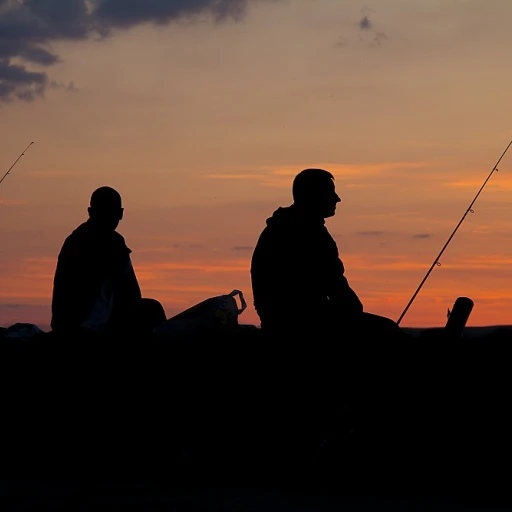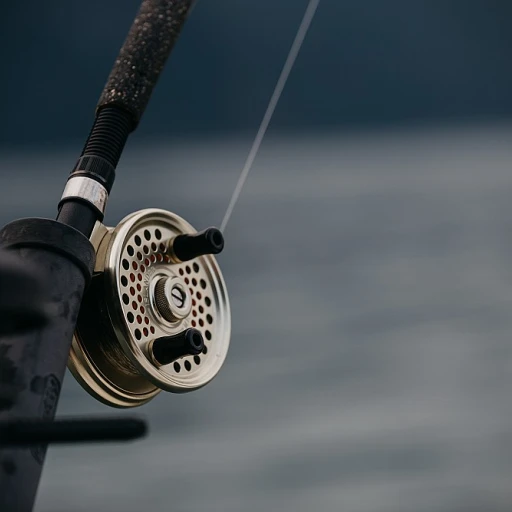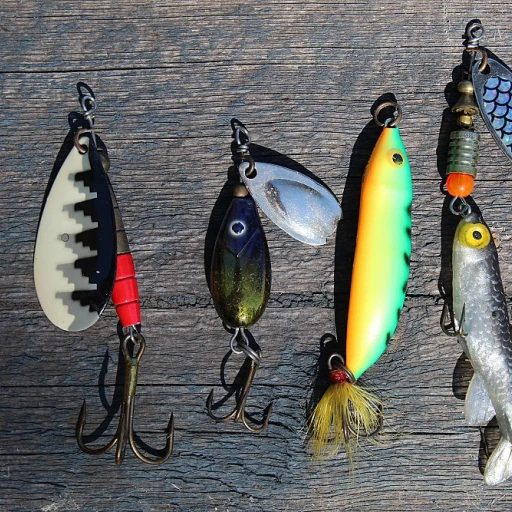
The world record alligator gar: a historical overview
A fish of legendary proportions
The world record alligator gar, held since 1951, is a testament to both the size and power of this ancient, prehistoric species. Bill Valverde's gar, caught in the Rio Grande River in Texas, weighed an astonishing 279 pounds and measured 7 feet 11 inches long. This record has stood for decades, becoming an iconic figure in gar fishing circles. Fishermen and women worldwide continue to chase this elusive milestone, each hoping to outdo Valverde's legendary catch.
Compared to other freshwater fish, the alligator gar is exceptionally large. Its close relatives and similar prehistoric species, like the longnose gar and the Florida gar, don't reach such massive sizes. This characteristic size is a major factor in the fascination with alligator gar fishing, drawing enthusiasts from across the globe to places like the Sam Rayburn Reservoir and the Rio Grande River.
The persistence of tradition and innovation in gar fishing
While modern technology and sophisticated gear have revolutionized fishing, some anglers still swear by the time-honored lures and methods. Techniques used in the 1950s, such as hand-lining and sturdy pound test lines, remain popular. These traditional approaches are particularly favored in southeast Texas, where the waters are teeming with monster alligator gars.
The secret diary of a trophy fish details such angling techniques and triumphs, providing a glimpse into the enduring allure of traditional fishing methods, complemented occasionally by modern advancements.
Meet the experts: Kirk Kirkland and Art Weston
The pioneers in alligator gar fishing
When talking about the world record alligator gar, two names stand out: Kirk Kirkland and Art Weston. These experts are not just legends in the industry, but they've also contributed a wealth of knowledge to the field of recreational fishing, enriching our understanding and appreciation of what's the secret behind landing a prize-winning catch.
Kirk Kirkland, a native of Texas, brings with him decades of experience. His impressive credentials include being a fishing guide by the International Game Fish Association (IGFA) standards. Kirkland is renowned for breaking multiple records, including the 279-pound alligator gar he caught in 2006 on the Rio Grande. His expertise extends beyond just catching fish; he's also a well-respected conservation advocate, emphasizing the importance of preserving Texas's rich aquatic life.
Art Weston, another stalwart in the arena, is equally celebrated. Hailing from Kentucky, Weston’s experience primarily lies in freshwater fishing. His methods combined old-school strategies with innovative technology, making him a legend in the field. One of his most remarkable achievements was hooking a 327-pound alligator gar off the coast of Florida. He attributes his success to the meticulous selection of tackle and pound test lines, ensuring minimal fish stress and maximum yield.
Unique techniques and approaches
Both Kirkland and Weston have developed unique techniques that set them apart. Kirk Kirkland uses specialized rod and reel combos tailored for high endurance and strength capabilitives needed to tussle with massive gar. His favorite locales include the Sam Rayburn Reservoir and the Rio Grande River, recognizing these spots as prime real estate for hunting the elusive alligator gar. He mentions that the right tackle combined with years of localized knowledge can yield spectacular results.
On the flip side, Art Weston keeps his cards close, sharing little but enough to intrigue. His philosophy centers around minimal gear interference, using the lightest pound test lines that modern technology can offer, but which must still be strong enough to handle these colossal fish. His biggest triumphs have come from Wisconsin waters, where his favorite fishing spots are known details within close-knit circles.
Their lasting impact
Both Kirk Kirkland and Art Weston have left an indelible mark on the world of gar fishing. Their legacies extend beyond mere records to the development of a fishing community deeply respectful of the sport and the aquatic ecosystems. Their stories serve as inspirations for countless enthusiasts, making these experts integral characters in the ongoing saga of breaking world records.
Texas: the epicenter of alligator gar fishing
The alligator gar hotspots
For those truly passionate about gar fishing, Southeast Texas offers some of the most famous locations to explore. The Sam Rayburn Reservoir stands out as a premier spot, though not without its challenges. This reservoir is no stranger to heavy rain, tornadoes, and fluctuating water levels, which all contribute to creating the perfect environment for monster gars.
A day with the legends
There's no discussion of Texas alligator gar fishing without mentioning Captain Kirk Kirkland. Known for his deep knowledge and years of experience, Kirk has guided countless anglers to catch record-breaking alligator gars. He has been an indispensable figure in promoting and protecting this ancient fish.
On the other hand, Art Weston of Kentucky remains a renowned expert, often taking trips down to Texas to pursue these freshwater giants. The combination of their expertise promises an unforgettable experience for novice and professional anglers alike.
Texas parks and wildlife's commitment
The involvement of Texas Parks and Wildlife is vital in keeping this recreational activity safe and sustainable. Through initiatives like catch-and-release programs and regulated fishing seasons, they ensure the alligator gar population maintains its health and numbers. Active data collection helps track growth rates, survival, and migration patterns, which is necessary for making informed decisions.
Locals' insights and experiences
Grab a cup of coffee at any local bait shop, and you'll hear first-hand stories of encounters with giant gar. These tales, filled with excitement and awe, reveal not only the technical know-how but also the thrill of the fight that brings anglers back again and again. From the choice of rod and reel to tales of narrowly missed records, these conversations add a layer of community richness to the sport.
The science behind catching a monster alligator gar
Essential techniques for snagging a record alligator gar
Catching a monster alligator gar is a thrilling challenge for any angler, and there's real science behind it. Let's dive into some of the key techniques and gear you'll need to have a shot at landing one of these prehistoric beasts.
The vital role of tackle and equipment
Legendary anglers like Kirk Kirkland and Art Weston swear by their gear, emphasizing its importance in catching a record-breaking alligator gar. From heavy-duty rods and reels to pound-test lines, every piece of equipment plays a critical role. According to the International Game Fish Association (IGFA), using a heavy pound-test line, such as 100-pound test, is crucial to handle the sheer size and strength of these giants.
Seasonal and environmental factors
Texas, especially the Sam Rayburn Reservoir, is a prime location for fishing alligator gar. However, weather conditions like heavy rain and tornadoes in Southeast Texas can influence fishing success. Anglers have observed that peak seasons, particularly in late spring and early summer, when water temperatures rise, provide optimal conditions for a big catch.
Using bait effectively
To catch a record alligator gar, using the right bait is essential. Many successful anglers prefer live bait, such as shad or carp, which are native to Texas waters. Expert Kirk Kirkland suggests that the alligator gar's diet consists primarily of these fish, making them the perfect bait choice. Additionally, using a float rig can help keep the bait at the correct depth, increasing the chances of a strike.
Understanding gar behavior
Gar behavior is often misunderstood, but knowing how they react can be the difference between catching a big fish or going home empty-handed. Alligator gars are ambush predators, meaning they rely on stealth and surprise when hunting their prey. Captain Kirk often advises anglers to be patient and let the fish fully take the bait before setting the hook firmly. This behavior is especially pronounced in areas like the Rio Grande and Mississippi River, where alligator gar are known for their cunning.
Case studies: learning from the best
In 1951, Bill Valverde set the IGFA record with a 279-pound gar caught on the Rio Grande, using tackle that many would consider archaic by today's standards. More recently, Art Weston showcased his expertise with a 2014 catch that made headlines in Wisconsin. Analyzing their techniques and equipment offers invaluable insights for anyone aiming to break these records. For more incredible tales and techniques from top anglers, check out the secrets of trophy fish anglers.
Gear up, understand the science, and who knows? Maybe your name will be etched next in the annals of gar fishing history.
Controversies and conservation efforts
Protecting the legacy: controversies and conservation efforts
The realm of alligator gar fishing is not without its heated debates. From Texas to Kentucky, the stunningly large and aggressive nature of this fish has sparked both fascination and controversy. On one hand, you have enthusiasts like Kirk Kirkland and Art Weston who proudly display their record catches. On the other, environmental activists voice concerns over the sustainability of such pursuits.
In Southeast Texas, where the Sam Rayburn Reservoir hosts countless anglers each year, arguments have erupted over conservation policies. Local experts fear that overfishing, alongside heavy rain and severe weather causing habitat disruption, could lead to a decline in gar populations. Dr. Matt Williams, a renowned marine biologist at Texas Parks & Wildlife, was quoted in a Fox News article stating, “Without immediate and stringent measures, these remarkable freshwater giants could face severe decline.”
Data trends showing potential risks
Looking at figures, a report by the International Game Fish Association (IGFA) reveals that while alligator gars have made some of the most thrilling catches, their populations are not immune to pressure. Interestingly, the number of large alligator gar caught, particularly those exceeding the 200-pound mark, has reduced by approximately 14% over the last decade.
A survey by the Texas Parks and Wildlife Department highlights that over three million freshwater anglers in Texas alone showed an increasing interest in gar fishing. These trends, while showcasing the growing lure of this sport, also indicate potential overfishing problems, with intense pressure on the gar populations in known hotspots like the Rio Grande River and the Mississippi.
Efforts in conservation and controversy
Conservation efforts are met with mixed feelings among the angling community. While some agree on the necessity of stringent catch limits and protective measures, others argue it stifles the sport. Kirby Weston, another notable figure in gar fishing, has been an advocate for responsible fishing practices. He believes that measures like sustainable gear usage can help balance both recreation and conservation.
The IGFA has been active in promoting catch-and-release programs, especially for large specimens that are vital for breeding. Their initiatives, however, have sparked debates among traditionalists who claim that such restrictions detract from the sport’s essence. Nonetheless, Kirkland and many other seasoned anglers have come forward to prove that responsible fishing practices do not compromise the excitement of the catch.
Looking forward
As we see collaborative efforts between sports fishermen, governmental agencies, and environmentalists, the goal remains to ensure the sustainability of alligator gar fishing. It is essential for future record breakers that the giants swimming in places like Sam Rayburn Lake and beyond continue to thrive. With voices like those of Kirk Kirkland and Art Weston advocating for change, there is hope that the majestic alligator gar remains a feared and revered figure in the water.
Case studies: remarkable catches and their stories
Legendary catches that made history
The chase for the world record alligator gar is filled with tales of grit, big-hearted adventurers, and outright disbelief. One such thrilling escapade belongs to Kirk Kirkland, an acclaimed fishing guide hailing from Texas. Kirk, known for his passion and profound knowledge of alligator gars, has regaled many with his jaw-dropping catches. Kirk's dedication to the sport has been evident throughout his career, making multiple headlines with the alligator gars he's caught, some tipping the scales at over 200 pounds. An impressive feat indeed!
Another noteworthy angler is Arthur Weston, or simply Art, as many fellow fishermen fondly refer to him. A zealous pursuer of trophy fish, Art reeled in a monster alligator gar in Kentucky, a state not typically famous for such catches. Using his custom rod and reel, Art managed to haul in a behemoth gar, adding to his impressive string of big fish tales. His meticulous approach stands as a testament to the fact that record-breaking catches aren't mere flukes—rather, they are the culmination of experience, technique, and unyielding resolve.
Record holders and their stories
When discussing remarkable catches, we can't ignore the historic achievement of Bill Valverde. Back in the 1950s, Bill hooked an enormous 279-pound alligator gar in the Rio Grande, a record that stood tall for decades. Another legendary catch occurred at Sam Rayburn Lake in Southeast Texas when Matt Williams captured a gar measuring over eight feet long. It's said that the gar was so massive it required a specialized boat to transport it safely to shore.
More recent stories include the remarkable catch by Captain Kirk Kirkland during a heavy rain bout in Sam Rayburn Reservoir. Nicknamed 'Garship Enterprise,' Kirk's boat weathered tornadoes and intense downpours, ensuring a safe passage for his alligator gar caught amid the tumultuous weather conditions. These stories don't just make headlines; they etch unforgettable chapters in the annals of fishing history.
Insight from the international game fish association
The International Game Fish Association (IGFA) plays a crucial role in verifying world records. According to IGFA records, the current title of the largest alligator gar caught still belongs to the epic 279-pound monstrous snagged by Bill Valverde. Fishermen dedicated to setting new records often adhere to stringent guidelines and legal practices, ensuring the integrity of each catch. This is vital because, in a sport where tall tales are as common as bait hooks, authenticity is everything.
With such illustrious tales and benchmark-setting exemplars, the alligator gar continues to hold a mystique and allure that draws anglers from across the globe. Whether it's Kirkland's thrilling quests in Texas, Art Weston's methodical approach in Kentucky, or the array of trophy holders' stunning feats, the pursuit of the world record alligator gar remains a captivating and potent testament to human endurance and passion.
Trends in gar fishing: what’s changing?
Technology and innovative gear
Recent advancements in fishing technology are pushing the boundaries of what's possible in gar fishing. For instance, innovations in vintage tackle paired with modern gear have given anglers an edge. High-strength pound test lines, advanced rod and reel combos, and sophisticated sonar technologies allow for pinpoint accuracy when locating formidable adversaries like alligator gars.
Popular hotspots and new locations
While traditional locations like the Sam Rayburn Reservoir and Rio Grande River remain prime spots, recent heavy rains and changing weather patterns in Southeast Texas have brought tornadoes heavy rain, altering fish habitats and introducing new hotspots. Yet, popular venues like the Sam Rayburn Lake continue to produce monster alligator gars, reinforcing Texas' reputation as a gar fishing haven.
Shifts in angler behavior and tactics
Anglers are increasingly turning to Catching Method techniques championed by experts like Captains Kirkland and Weston. These techniques aren't just about brute strength but involve meticulous planning and execution. The International Game Fish Association (IGFA) has noted an uptick in the submission of catches using these advanced methods, reflecting a shift towards a more strategic approach in landing these formidable fish.
The rise of alligator gar tournaments
In recent years, the number of alligator gar fishing tournaments has surged. From local contests in Southeast Texas to larger events affiliated with the International Game Fish Association, these tournaments draw anglers from across the world, aiming to break current world records.
Conservation and ethical fishing trends
There's a growing emphasis on ethical angling practices among the gar fishing community. Anglers are increasingly mindful of catch-and-release strategies and the long-term impact on gar populations. Organizations like the Texas Parks and Wildlife Department advocate for sustainable fishing practices, ensuring the survival of these prehistoric giants for future generations.
Media influence and virtual communities
Social media and fishing forums have significantly impacted the gar fishing landscape. Influencers and experienced anglers share tips, tricks, and success stories, creating a virtual gar fishing community. Matt Williams, a popular figure in the gar fishing scene, often shares insights and reports on trending fishing techniques, contributing to widespread community knowledge. Platforms like Fox News cover significant catches, keeping the excitement and interest alive among enthusiasts.
Future prospects: the next world record alligator gar
Anticipating the next record-breaker
The chase for the next world record alligator gar has anglers on the edge of their seats. This fascination is grounded in history and driven by the sheer thrill of possibly landing a monster. The bar was set high with Bill Valverde's alligator gar from the Rio Grande, weighing in at a staggering 279 pounds, according to the International Game Fish Association (IGFA). But records are meant to be broken, and many believe the waters of southeast Texas, particularly Sam Rayburn Reservoir and the Rio Grande River, still hold giants that are bigger.
Advancements in fishing technology
As the equipment evolves, so do the chances of breaking records. Innovations in rods and reels are making it easier to handle these freshwater behemoths. Experts like 'Captain Kirk' Kirkland and Art Weston leverage the latest advancements to ensure they are always ready for the next big haul. Kirkland famously reeled in a 230-pound alligator gar with precise technique and top-tier equipment, and believes it’s just a matter of time before someone catches a new record-breaker.
The role of weather and environment
The prospects of landing a record alligator gar don't solely depend on skill or technology; environmental factors play a significant role too. Heavy rains, such as those recently witnessed in southeast Texas, bring nutrient-rich runoff into rivers and lakes, creating prime feeding conditions for gars. Storm season, bringing tornadoes and heavy rain, often results in an increase in large fish sightings.
Fishing community insights
Engagements with local fishing clubs and conversations at events often reveal fascinating updates about potential record-busting gars. Contributions to recreational fishing forums are essential for staying updated with current trends and possible hotspots for these elusive giants. For more on how local fishing communities contribute to angler expertise, read this amazing article.
Speculating on the next big catch
The crossover between seasoned experts and up-and-coming enthusiasts converging on Texas waters makes for exciting speculation. Could the next world record come from a routine outing on Sam Rayburn Lake? Or perhaps a dedicated expedition along the Mississippi River? With consistent efforts and the right mix of conditions, it’s only a matter of time before the world hears of another monumental catch.

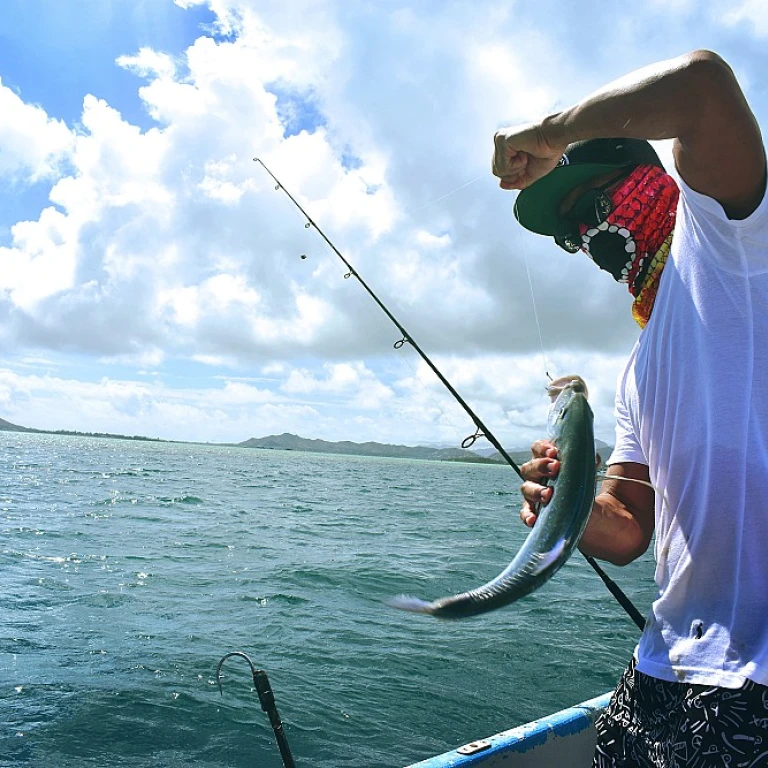


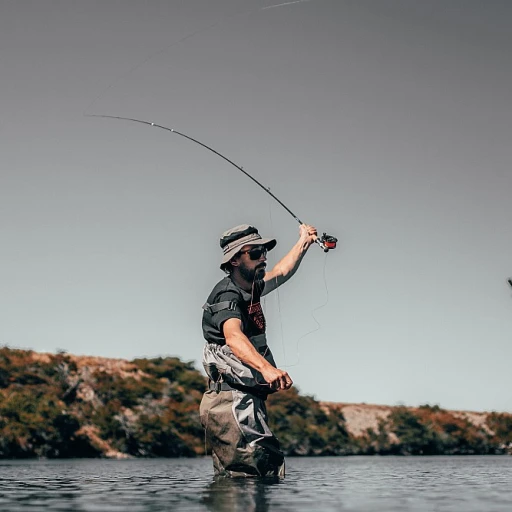
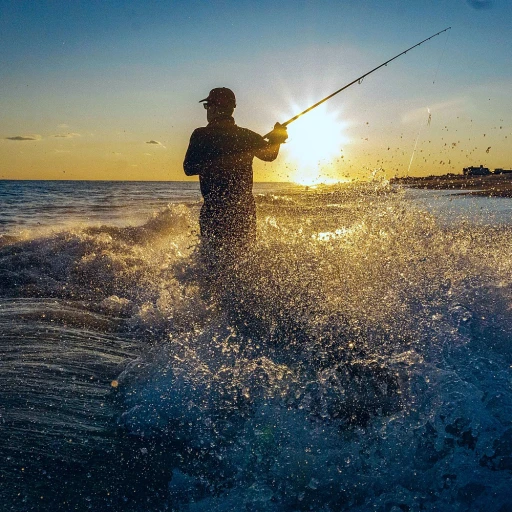


-large-teaser.webp)

-large-teaser.webp)
